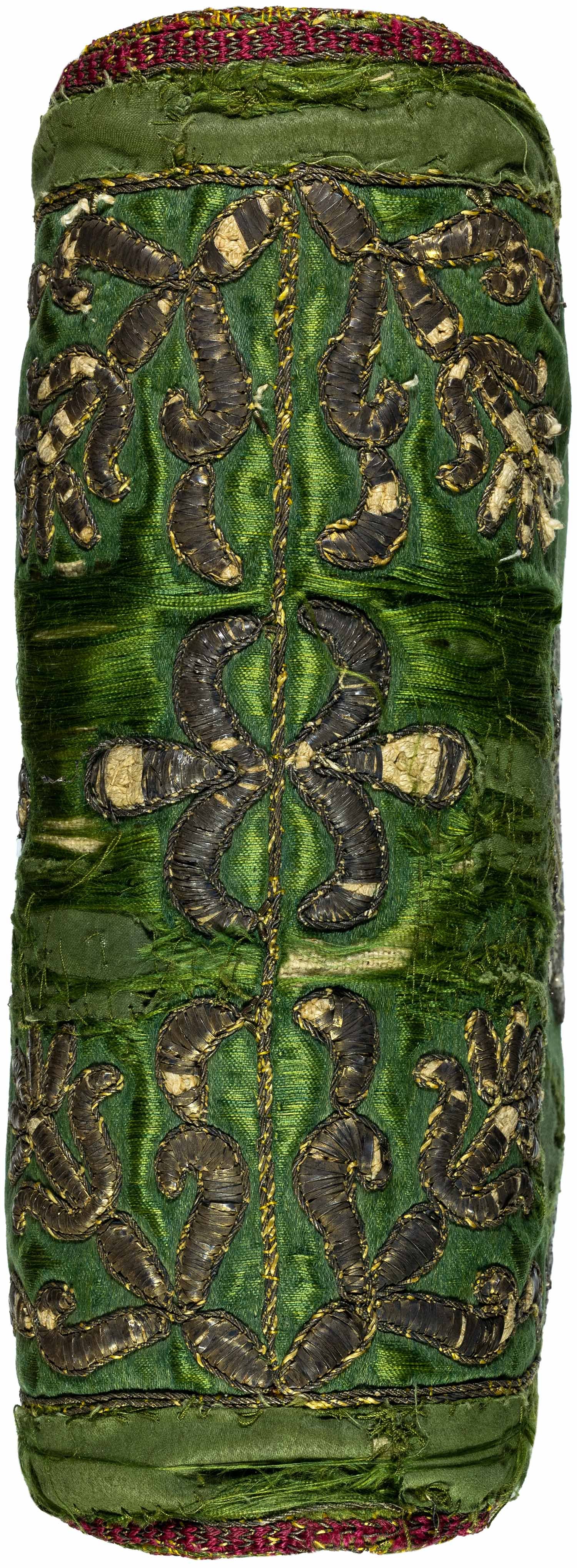The Personal Bible of a Famous Saint: A very rare Plantin Print from 1565
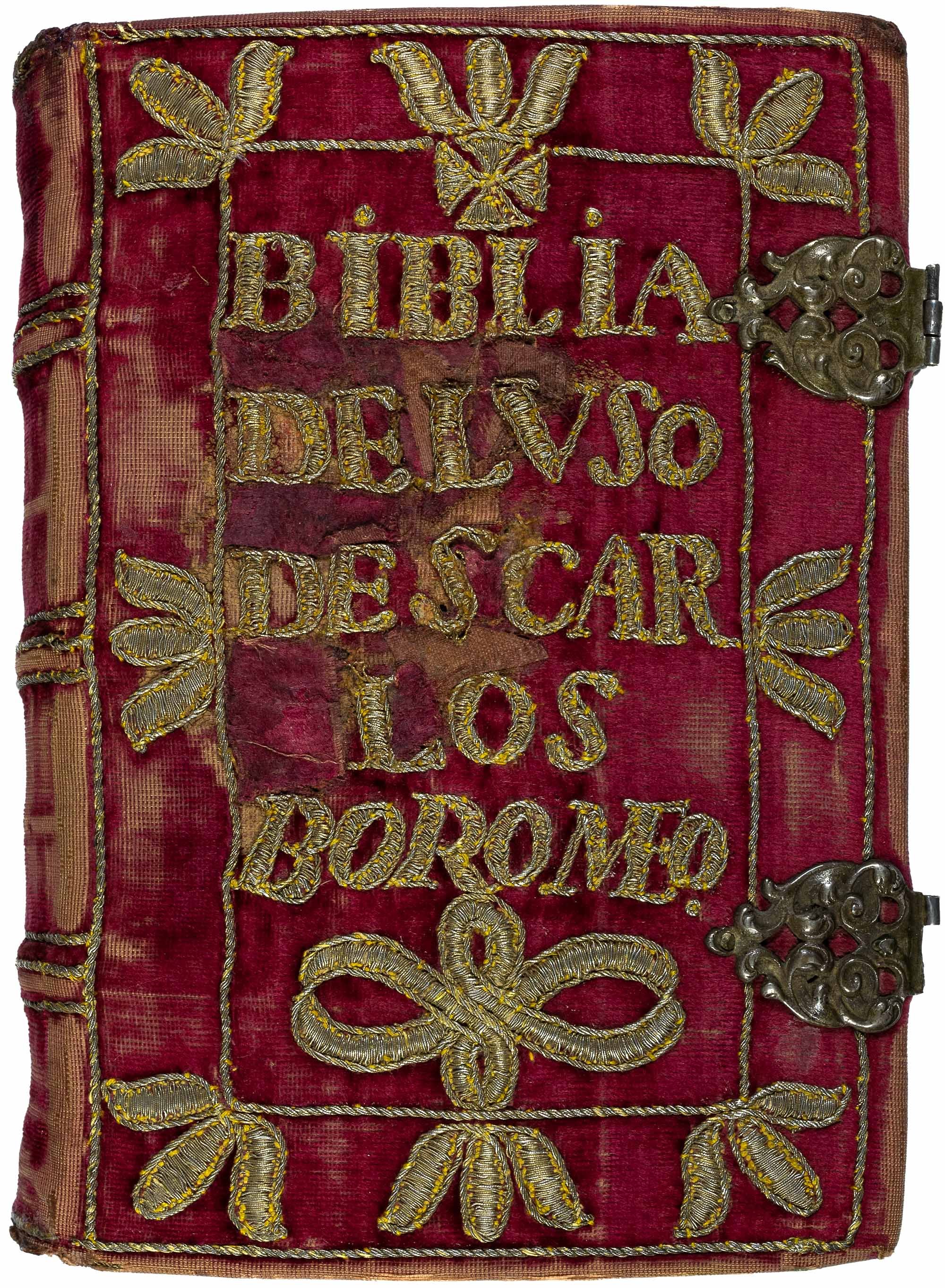


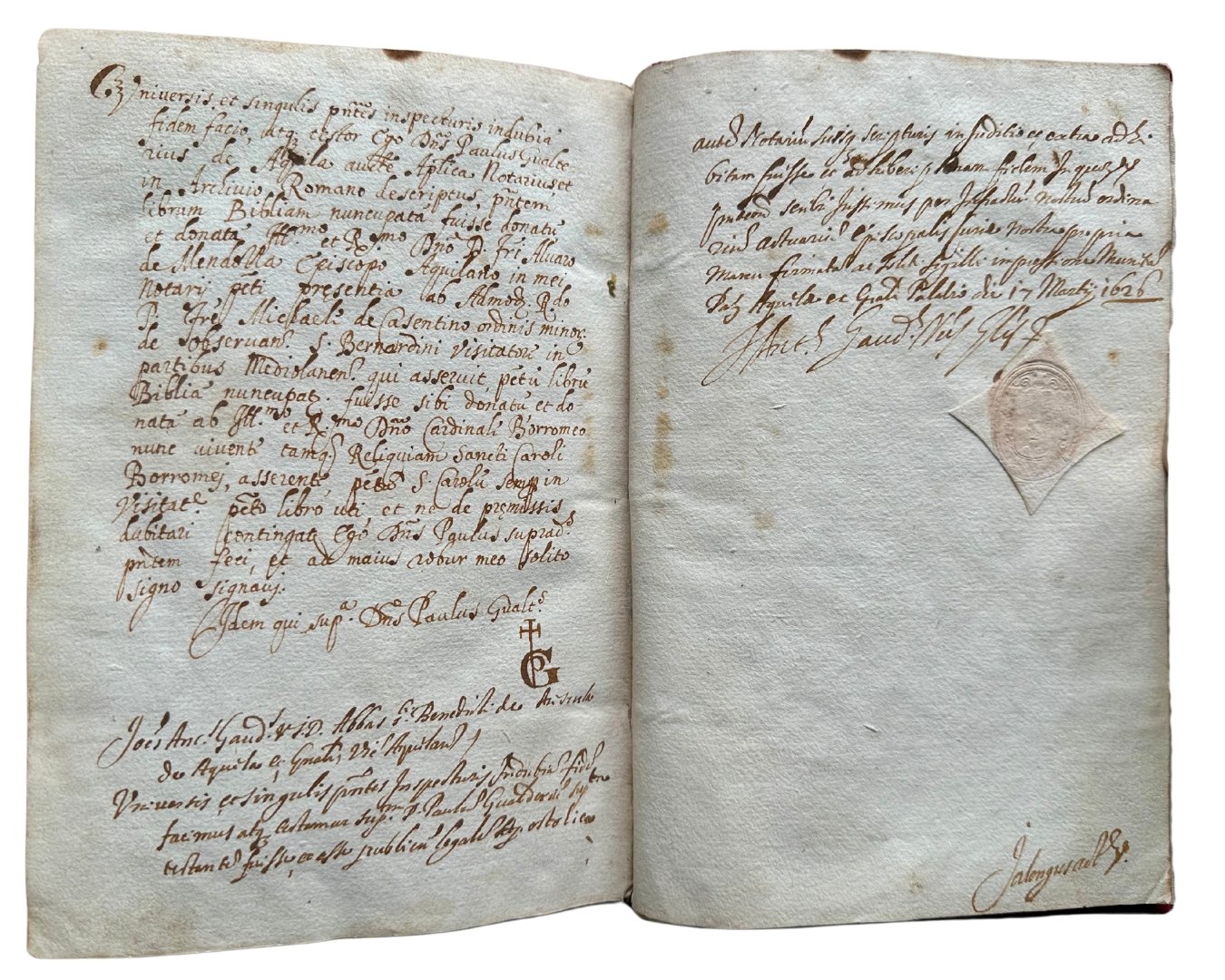
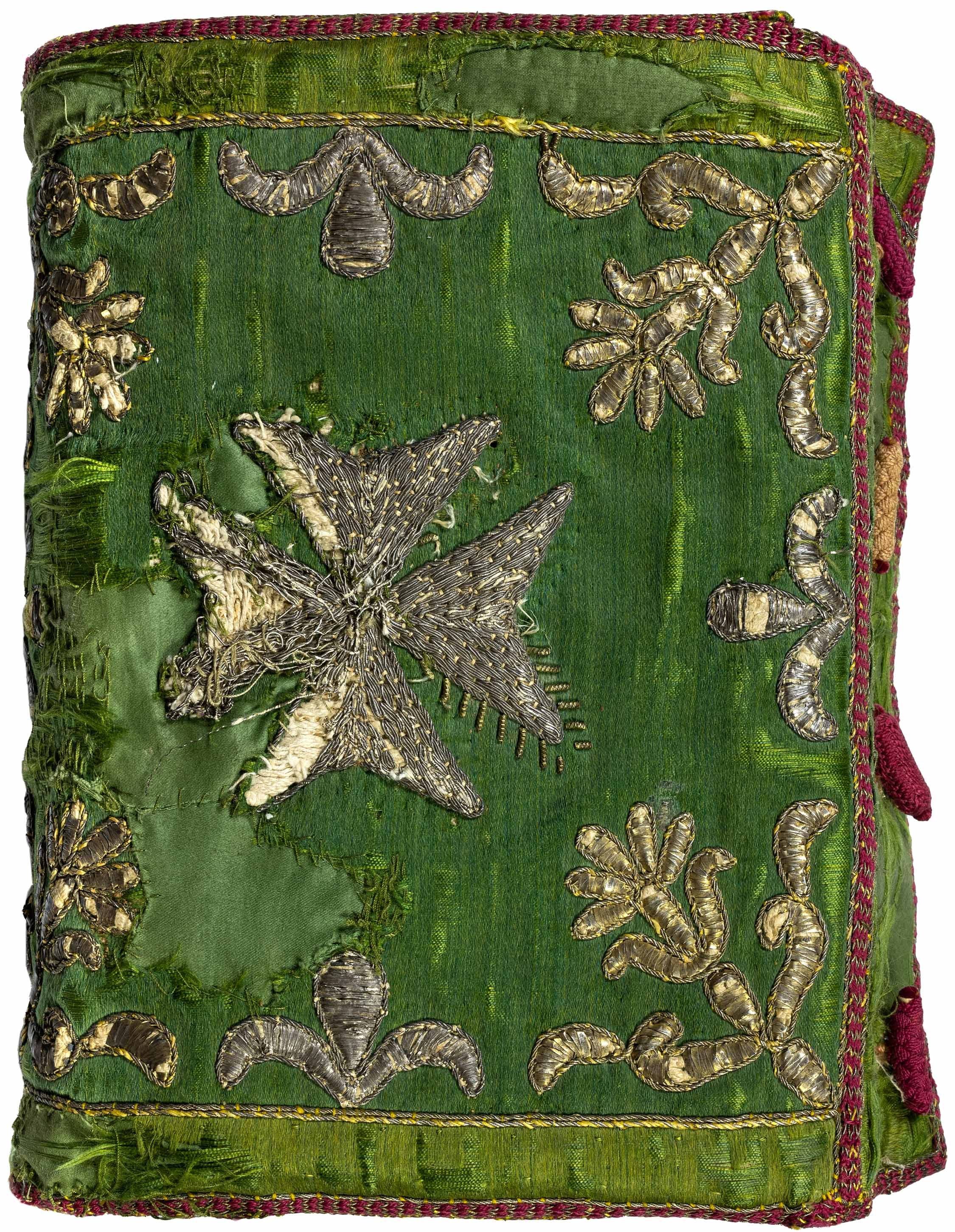
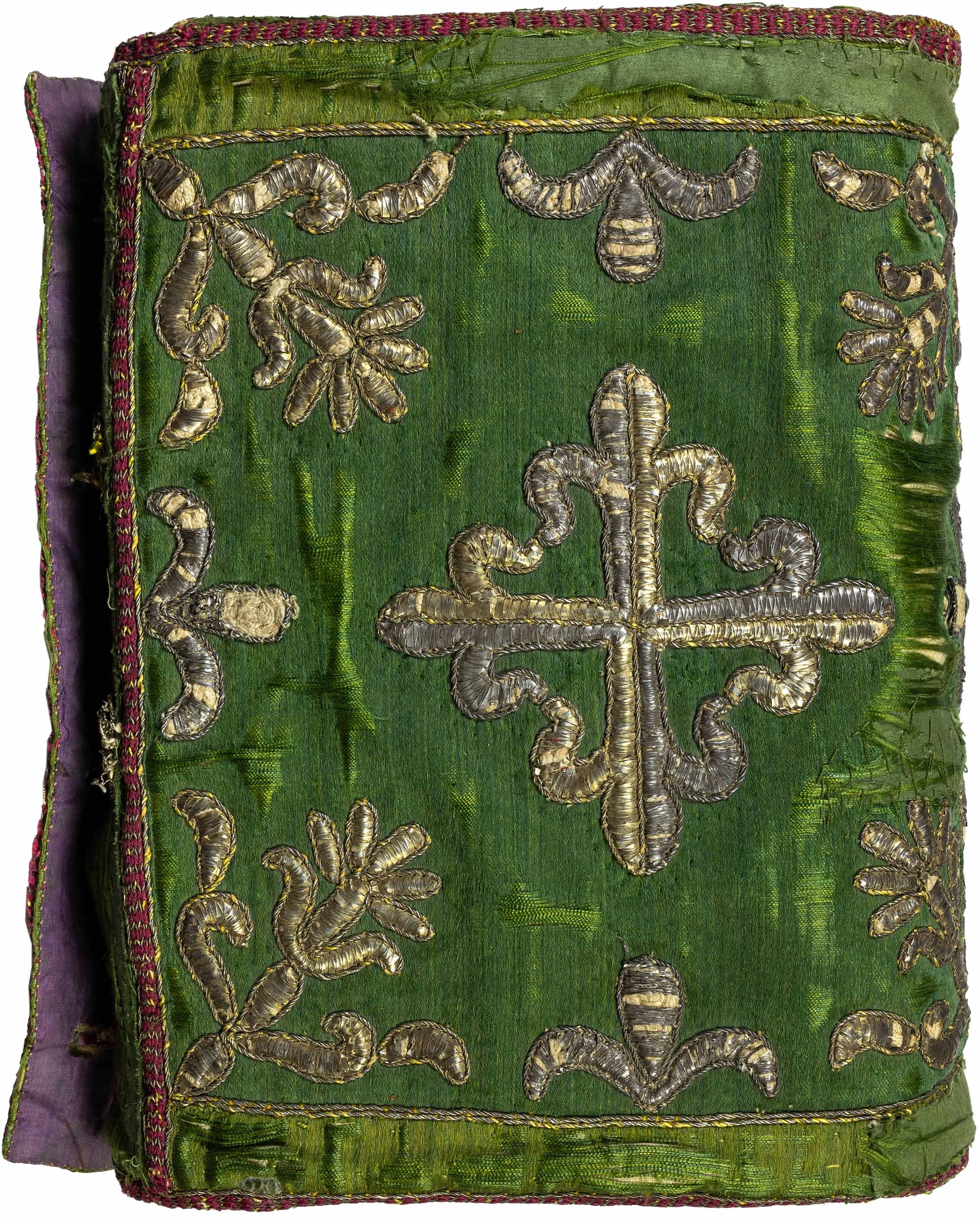
Biblia latina. 2 parts in one volume. Antwerp, Christophe Plantin, 1565. - 8 leaves, 392 numbered leaves, 98 numbered leaves, 21 leaves (Index), 1 blank leaf; 32 leaves (Interpretatio nominum hebraicorum). Two leaves with handwritten notarial confirmation, dated 1626, bound at the end. - With title border, large printer's mark at the end and numerous decorative initials, all in woodcut. - Small quarto (195 x 130 mm). Late 16th or early 17th-century Spanish oe Italian binding of crimson velvet (on leather), adorned with rich relief embroidery in silver threads; with silver clasps (one lacking); housed in a green silk satchel with violet silk lining, featuring relief embroidery in silver and gold threads and wires on the front and back; presented in an old wooden case covered in purple velvet.
A precious relic: The personal Bible of Saint Charles Borromeo!
A unique testament to saint veneration in an extraordinary velvet binding with silver embroidery
This Bible, a very rare Plantin print from 1565 (only five copies known worldwide), was the personal copy of Saint Charles Borromeo.
The provenance of the volume is confirmed by a notarial document bound in at the end. Paulus Gualtierius, Notary in L’Aquila, certifies before witnesses that the present Bible was donated to the Bishop of L’Aquila, Alvaro de Mendotta (or Mendoza), on 17 March 1626 by Michael de Casentino, a member of the Congregation of Saint Bernard. Michael, in turn, had received this Bible from the hands of Cardinal Charles Borromeo during a visit to Milan, hence it is now venerated as a relic. The extraordinary silver-embroidered binding in a silk satchel decorated with relief embroidery as well also bears witness to this devotion. This book is a unique, venerable document of the early cult around the »Saint of the Counter-Reformation«, who was already canonised in 1610.
Carlo Borromeo: The Saint of the Counter-Reformation
Carlo Borromeo (1538 – 1584) was born as the second son of Count Gilberto Borromeo and Margherita de’ Medici in the castle of Arona on Lake Maggiore. The most famous and popular Archbishop of Milan to this day played a prominent role in the Council of Trent, especially at the third session starting in 1561, which he co-led with Pope Pius IV, his uncle. This activity was also significant with regard to our Bible: in the struggle against the spreading Reformation, the Council aimed, among other things, to enforce an authentic Bible text, which was found and recognized in the Latin Vulgate. Charles V had entrusted the theological faculty of Leuven with the text revision task, which aimed for standardization. The first edition in this form was published in 1547 with a preface by the Dominican Johannes Hentenius, who supervised the text revision. It was considered "the most exact and in every way the best" [Clair 59]. This Plantin Bible is derived from that edition, containing Hentenius's preface. It was one of the latest editions with a revised text available to the Archbishop of Milan, and due to its convenient size, it can likely be considered his reading copy.
St. Charles Borromeo - Church of St. Ignatius of Loyola, Rome - Photo: Gustavo Kralj
In addition to the exceptional significance of the Bible as a provenance item of a saint, there is the rarity of the edition, the first octavo Bible published solely by Plantin: Leon Voet knows only five copies in his authoritative Plantin bibliography, with the one in the Plantin-Moretus Museum in Antwerp being incomplete. The 32 leaves containing the Interpretatio nominum hebraicorum were issued as a separate printing unit and, according to the imprint, were completed later than the Bible text: only one copy of it is known to Voet. The Bible text, edited under the direction of Hentenius, however, had a wide distribution in the ensuing years; it remained authoritative for Catholic doctrine until the publication of the Vatican edition in 1590.
Borromeo was also one of the decisive advocates for the enforcement of the Tridentine Council decrees and was regarded, much like Ignatius of Loyola, as a champion against advancing Protestantism. The cult surrounding him began immediately after his death at the age of 46; he was canonized by Pope Paul V as early as 1610. The canonization bull calls him "a martyr of love, a shining example for shepherds and sheep, an angel in human form".
The binding itself is a rarity: In the most comprehensive overview of embroidered bindings, the exhibition catalog Livres en broderie of the Paris Bibliothèque nationale from 1995 lists only a few comparable examples, none with such distinguished provenance, however. The preservation of the ensemble, both of the text and the richly embroidered binding and silk case, is remarkably beautiful, only minimally affected by signs of devout use on the embroidery of the satchel.
Provenance: Cardinal Carlo Borromeo (1538 – 1584), Archbishop of Milan, canonized in 1610. He presented the book to the Cistercian monk Michael de Casentino, who in turn, on March 17, 1626, in a notarized act, presented it to the Bishop of L’Aquila, Alvaro de Mendotta. – European Private Collection.
Literature: Adams B 1069; Bibliotheca Sussexiana I/2, p. 433, No. 123; BM STC Dutch 22; not in Cockx-Indestege et al. (not No. 443 or 444); not in Darlow/Moule; Delaveau/Hillard 898; Heitzmann/Santos Noya D 718 (with illustration); Voet Compasses, I, 681 (Bible text, cites 5 copies) and IV, 1749 (knows only 1 copy of the Interpretatio).
This book has been described in great detail in our catalogue 90 “Wunderkammer”, lot 89. Click here to view the eCatalogue or order the printed version in our Online Shop.
If you would like to receive further information on this work, please contact us.
